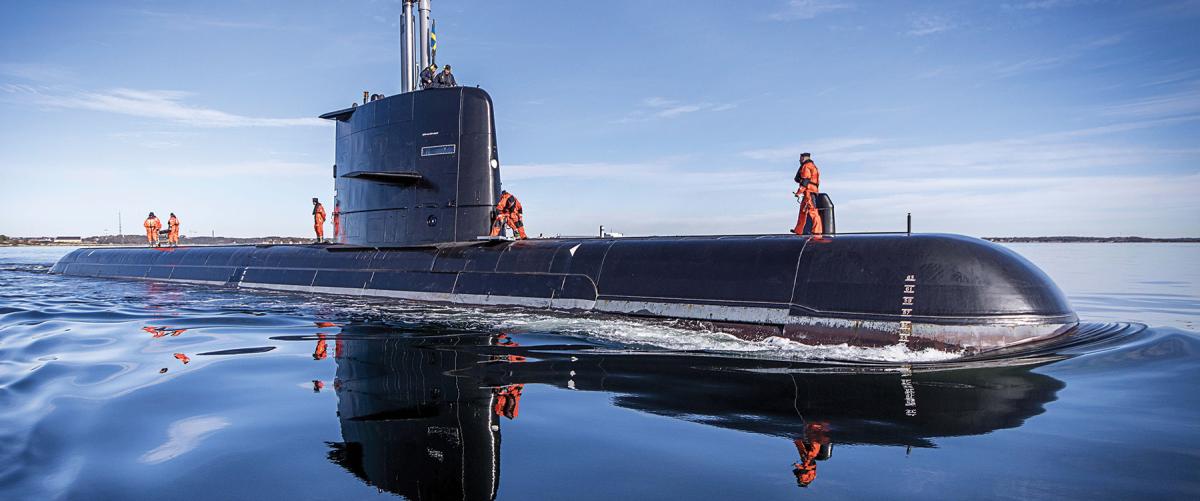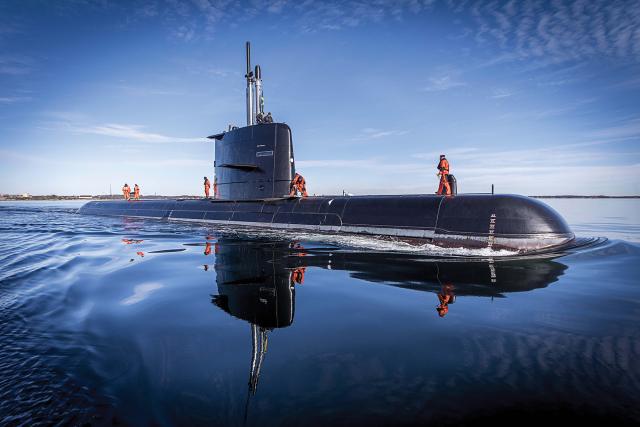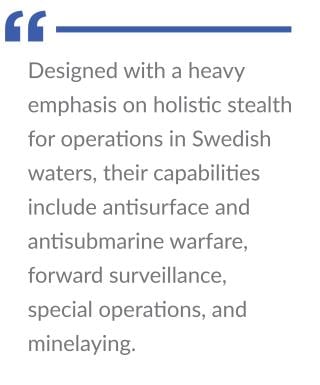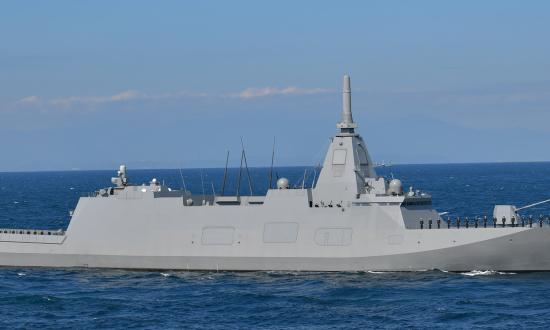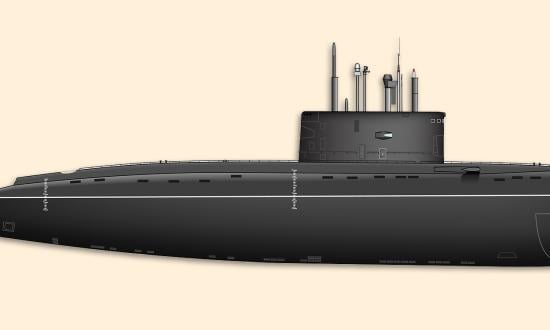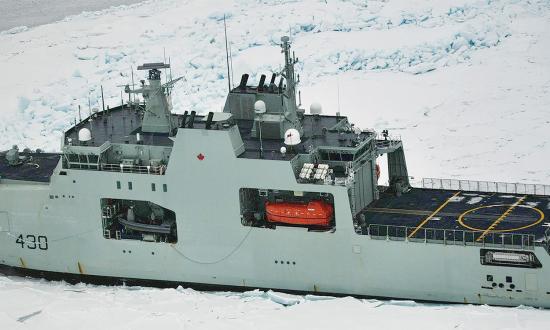Sweden’s march toward full NATO membership brings an impressive naval fleet into the spotlight, exemplified by the Royal Swedish Navy’s Gotland-class (Type A-19) submarines. These three boats—the Gotland, Uppland, and Halland—are now more than a quarter-century old, but they have been continually updated to retain their top-tier status.
Based on the previous Västergötland (Type A-17), the Gotlands were ordered in 1990 and are considered the first operational submarine class in the world to feature an air-independent propulsion (AIP) system. Construction began in 1992 at the Kockums shipyard in Malmö, which was later acquired by Saab. The Gotland commissioned in 1996, and sisters Uppland and Halland joined the fleet in 1997.
Designed with a heavy emphasis on holistic stealth for operations in Swedish waters, their capabilities include antisurface and antisubmarine warfare, forward surveillance, special operations, and minelaying. The class is fitted with an X-rudder system to enhance maneuverability. Pioneering use of Stirling-cycle external-combustion engines for AIP make the Gotland class anything but conventional.
Their Stirling engines burn either oxygen stored in liquid oxygen tanks or standard diesel fuel. Underwater operations rely on this silent and vibration-free AIP, permitting weeks of virtually undetectable underwater endurance, limited primarily by the quantity of liquid oxygen stored on board. The submarines also have two standard diesel engines that typically are used only for long-distance surface transits or while snorkeling. These capabilities proved so innovative that the U.S. Navy coordinated to lease the Gotland between 2005 and 2007. During that time, the namesake submarine and her Swedish crew were homeported at San Diego, California, and operated as an opposing force in U.S. antisubmarine warfare training.
In 2018, the Gotland completed an extensive midlife enhancement program that added a six-and-a-half foot section to the hull and included improvements to the sensor suite, the addition of an optronics mast, upgrades to the combat and data-management systems, and improvements to the Stirling AIP and submarine cooling system that boosts out-of-area capabilities and supports operations in warmer climates. Sister Uppland completed a similar overhaul in December 2020, and plans were announced in 2022 to refit the Halland in the near future.
The newly modernized Gotland-class submarines displace 1,580 tons surfaced and measure 203 feet with a 20-foot beam. Crew size ranges from 25 to 32 personnel. Armament consists of a unique mix of four 21-inch bow tubes for heavyweight Type 62 torpedoes, and two 15.7-inch tubes for lighter-weight Type 45 or Type 47 torpedoes. The smaller 15.7-inch tubes can be loaded with two torpedoes per tube. A total of 12 heavyweight and 6 lightweight torpedoes can be carried. Up to 48 mines can be transported using an external belt. The updated Gotland class is expected to remain operational well into the 2030s, serving alongside Sweden’s next generation submarines, the A-26 Blekinge class, which are currently under construction and planned for delivery beginning in the late 2020s.



